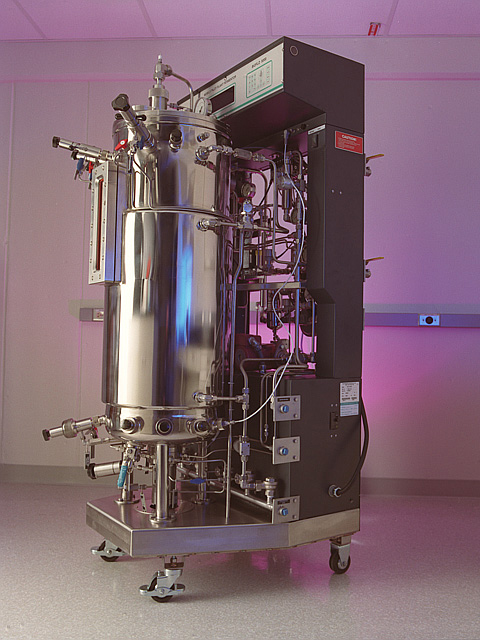|
Trichoderma Reesei
''Trichoderma reesei'' is a mesophilic and filamentous fungus. It is an anamorph of the fungus ''Hypocrea jecorina''. ''T. reesei'' can secrete large amounts of cellulolytic enzymes (cellulases and hemicellulases). Microbial cellulases have industrial application in the conversion of cellulose, a major component of plant biomass, into glucose. ''T. reesei'' isolate QM6a was originally isolated from the Solomon Islands during World War II because of its degradation of canvas and garments of the US army. All strains currently used in biotechnology and basic research were derived from this isolate. Recent advances in the biochemistry of cellulase enzymology, the mechanism of cellulose hydrolysis (cellulolysis), strain improvement, molecular cloning and process engineering are bringing ''T. reesei'' cellulases closer to being a commercially viable route to cellulose hydrolysis. Several industrially useful strains have been developed and characterised, e.g. Rut-C30, RL-P37 and ... [...More Info...] [...Related Items...] OR: [Wikipedia] [Google] [Baidu] |
Mesophilic
A mesophile is an organism that grows best in moderate temperature, neither too hot nor too cold, with an optimum growth range from . The optimum growth temperature for these organisms is 37°C. The term is mainly applied to microorganisms. Organisms that prefer extreme environments are known as extremophiles. Mesophiles have diverse classifications, belonging to two domains: Bacteria, Archaea, and to kingdom Fungi of domain Eucarya. Mesophiles belonging to the domain Bacteria can either be gram-positive or gram-negative. Oxygen requirements for mesophiles can be aerobic or anaerobic. There are three basic shapes of mesophiles: coccus, bacillus, and spiral. Habitat The habitats of mesophiles can include cheese and yogurt. They are often included during fermentation of beer and wine making. Since normal human body temperature is 37 °C, the majority of human pathogens are mesophiles, as are most of the organisms comprising the human microbiome. Mesophiles vs. extremophiles ... [...More Info...] [...Related Items...] OR: [Wikipedia] [Google] [Baidu] |
Biochemistry
Biochemistry or biological chemistry is the study of chemical processes within and relating to living organisms. A sub-discipline of both chemistry and biology, biochemistry may be divided into three fields: structural biology, enzymology and metabolism. Over the last decades of the 20th century, biochemistry has become successful at explaining living processes through these three disciplines. Almost all areas of the life sciences are being uncovered and developed through biochemical methodology and research. Voet (2005), p. 3. Biochemistry focuses on understanding the chemical basis which allows biological molecules to give rise to the processes that occur within living cells and between cells,Karp (2009), p. 2. in turn relating greatly to the understanding of tissues and organs, as well as organism structure and function.Miller (2012). p. 62. Biochemistry is closely related to molecular biology, which is the study of the molecular mechanisms of biological phenomena.As ... [...More Info...] [...Related Items...] OR: [Wikipedia] [Google] [Baidu] |
Trichoderma
''Trichoderma'' is a genus of fungi in the family Hypocreaceae that is present in all soils, where they are the most prevalent culturable fungi. Many species in this genus can be characterized as opportunistic avirulent plant symbionts. This refers to the ability of several ''Trichoderma ''species to form mutualistic endophytic relationships with several plant species. The genomes of several ''Trichoderma'' species'' ''have been sequenced and are publicly available from the JGI. Taxonomy The genus was described by Christiaan Hendrik Persoon in 1794, but the taxonomy has remained difficult to resolve. For a long time, it was considered to consist of only one species, ''Trichoderma viride'', named for producing green mold. Subdivision In 1991, Bissett divided the genus into five sections, partly based on the aggregate species described by Rifai: *''Pachybasium'' (20 species) *''Longibrachiatum'' (10 species) *''Trichoderma'' *''Saturnisporum'' (2 species) *''Hypocreanum'' ... [...More Info...] [...Related Items...] OR: [Wikipedia] [Google] [Baidu] |
Endoglucanase
Cellulase (EC 3.2.1.4; systematic name 4-β-D-glucan 4-glucanohydrolase) is any of several enzymes produced chiefly by fungi, bacteria, and protozoans that catalyze cellulolysis, the decomposition of cellulose and of some related polysaccharides: : Endohydrolysis of (1→4)-β-D-glucosidic linkages in cellulose, lichenin and cereal β-D-glucan The name is also used for any naturally occurring mixture or complex of various such enzymes, that act serially or synergistically to decompose cellulosic material. Cellulases break down the cellulose molecule into monosaccharides ("simple sugars") such as β-glucose, or shorter polysaccharides and oligosaccharides. Cellulose breakdown is of considerable economic importance, because it makes a major constituent of plants available for consumption and use in chemical reactions. The specific reaction involved is the hydrolysis of the 1,4-β-D-glycosidic linkages in cellulose, hemicellulose, lichenin, and cereal β-D-glucans. Because cell ... [...More Info...] [...Related Items...] OR: [Wikipedia] [Google] [Baidu] |
Cellulosic Ethanol
Cellulosic ethanol is ethanol (ethyl alcohol) produced from cellulose (the stringy fiber of a plant) rather than from the plant's seeds or fruit. It can be produced from grasses, wood, algae, or other plants. It is generally discussed for use as a biofuel. The carbon dioxide that plants absorb as they grow offsets some of the carbon dioxide emitted when ethanol made from them is burned, so cellulosic ethanol fuel has the potential to have a lower carbon footprint than fossil fuels. Interest in cellulosic ethanol is driven by its potential to replace ethanol made from corn or sugarcane. Since these plants are also used for food products, diverting them for ethanol production can cause food prices to rise; cellulose-based sources, on the other hand, generally do not compete with food, since the fibrous parts of plants are mostly inedible to humans. Another potential advantage is the high diversity and abundance of cellulose sources; grasses, trees and algae are found in almost ever ... [...More Info...] [...Related Items...] OR: [Wikipedia] [Google] [Baidu] |
Cellobiohydrolase (other) , an enzyme
{{disambig ...
Cellobiohydrolase may refer to: * Cellulase, an enzyme * Cellulose 1,4-beta-cellobiosidase Cellulose 1,4-beta-cellobiosidase (, exo-cellobiohydrolase, beta-1,4-glucan cellobiohydrolase, beta-1,4-glucan cellobiosylhydrolase, 1,4-beta-glucan cellobiosidase, exoglucanase, avicelase, CBH 1, C1 cellulase, cellobiohydrolase I, cellobiohydrolas ... [...More Info...] [...Related Items...] OR: [Wikipedia] [Google] [Baidu] |
Stonewashed Jeans
Stone washing is a textile manufacturing process used to give a newly manufactured cloth garment a worn-in (or worn-out) appearance. Stone-washing also helps to increase the softness and flexibility of otherwise stiff and rigid fabrics such as canvas and denim. The process uses large stones to roughen up the fabric being processed. The garments are placed in a large horizontal industrial clothes washer that is also filled with large stones. As the wash cylinder rotates, the cloth fibers are repeatedly pounded and beaten as the tumbling stones ride up the paddles inside the drum and fall back down onto the fabric. A number of people and organizations have claimed to have invented stone-washing. According to Levi Strauss & Co., Donald Freeland, an employee of the Great Western Garment Company (later acquired by Levi's), invented "stone-washing" denim in the 1950s. Inventor Claude Blankiet has also been credited with having invented the technique in the 1970s. The jeans company ... [...More Info...] [...Related Items...] OR: [Wikipedia] [Google] [Baidu] |
Catabolite Repression
Carbon catabolite repression, or simply catabolite repression, is an important part of global control system of various bacteria and other microorganisms. Catabolite repression allows microorganisms to adapt quickly to a preferred (rapidly metabolizable) carbon and energy source first. This is usually achieved through inhibition of synthesis of enzymes involved in catabolism of carbon sources other than the preferred one. The catabolite repression was first shown to be initiated by glucose and therefore sometimes referred to as the glucose effect. However, the term "glucose effect" is actually a misnomer since other carbon sources are known to induce catabolite repression. ''Escherichia coli'' Catabolite repression was extensively studied in ''Escherichia coli''. ''E. coli'' grows faster on glucose than on any other carbon source. For example, if ''E. coli'' is placed on an agar plate containing only glucose and lactose, the bacteria will use glucose first and lactose second. Wh ... [...More Info...] [...Related Items...] OR: [Wikipedia] [Google] [Baidu] |
Strain (biology)
In biology, a strain is a genetic variant, a subtype or a culture within a biological species. Strains are often seen as inherently artificial concepts, characterized by a specific intent for genetic isolation. This is most easily observed in microbiology where strains are derived from a single cell colony and are typically quarantined by the physical constraints of a Petri dish. Strains are also commonly referred to within virology, botany, and with rodents used in experimental studies. Microbiology and virology It has been said that "there is no universally accepted definition for the terms 'strain', ' variant', and 'isolate' in the virology community, and most virologists simply copy the usage of terms from others". A strain is a genetic variant or subtype of a microorganism (e.g., a virus, bacterium or fungus). For example, a "flu strain" is a certain biological form of the influenza or "flu" virus. These flu strains are characterized by their differing isoforms of su ... [...More Info...] [...Related Items...] OR: [Wikipedia] [Google] [Baidu] |
Cellulolysis
Cellulose is an organic compound with the formula , a polysaccharide consisting of a linear chain of several hundred to many thousands of β(1→4) linked D-glucose units. Cellulose is an important structural component of the primary cell wall of green plants, many forms of algae and the oomycetes. Some species of bacteria secrete it to form biofilms. Cellulose is the most abundant organic polymer on Earth. The cellulose content of cotton fiber is 90%, that of wood is 40–50%, and that of dried hemp is approximately 57%. Cellulose is mainly used to produce paperboard and paper. Smaller quantities are converted into a wide variety of derivative products such as cellophane and rayon. Conversion of cellulose from energy crops into biofuels such as cellulosic ethanol is under development as a renewable fuel source. Cellulose for industrial use is mainly obtained from wood pulp and cotton. Some animals, particularly ruminants and termites, can digest cellulose with the help of sym ... [...More Info...] [...Related Items...] OR: [Wikipedia] [Google] [Baidu] |
Hydrolysis
Hydrolysis (; ) is any chemical reaction in which a molecule of water breaks one or more chemical bonds. The term is used broadly for substitution reaction, substitution, elimination reaction, elimination, and solvation reactions in which water is the nucleophile. Biological hydrolysis is the cleavage of biomolecules where a water molecule is consumed to effect the separation of a larger molecule into component parts. When a carbohydrate is broken into its component sugar molecules by hydrolysis (e.g., sucrose being broken down into glucose and fructose), this is recognized as saccharification. Hydrolysis reactions can be the reverse of a condensation reaction in which two molecules join into a larger one and eject a water molecule. Thus hydrolysis adds water to break down, whereas condensation builds up by removing water. Types Usually hydrolysis is a chemical process in which a molecule of water is added to a substance. Sometimes this addition causes both the substance and w ... [...More Info...] [...Related Items...] OR: [Wikipedia] [Google] [Baidu] |
Enzymology
Enzymes () are proteins that act as biological catalysts by accelerating chemical reactions. The molecules upon which enzymes may act are called substrates, and the enzyme converts the substrates into different molecules known as products. Almost all metabolic processes in the cell need enzyme catalysis in order to occur at rates fast enough to sustain life. Metabolic pathways depend upon enzymes to catalyze individual steps. The study of enzymes is called ''enzymology'' and the field of pseudoenzyme analysis recognizes that during evolution, some enzymes have lost the ability to carry out biological catalysis, which is often reflected in their amino acid sequences and unusual 'pseudocatalytic' properties. Enzymes are known to catalyze more than 5,000 biochemical reaction types. Other biocatalysts are catalytic RNA molecules, called ribozymes. Enzymes' specificity comes from their unique three-dimensional structures. Like all catalysts, enzymes increase the reaction ra ... [...More Info...] [...Related Items...] OR: [Wikipedia] [Google] [Baidu] |





